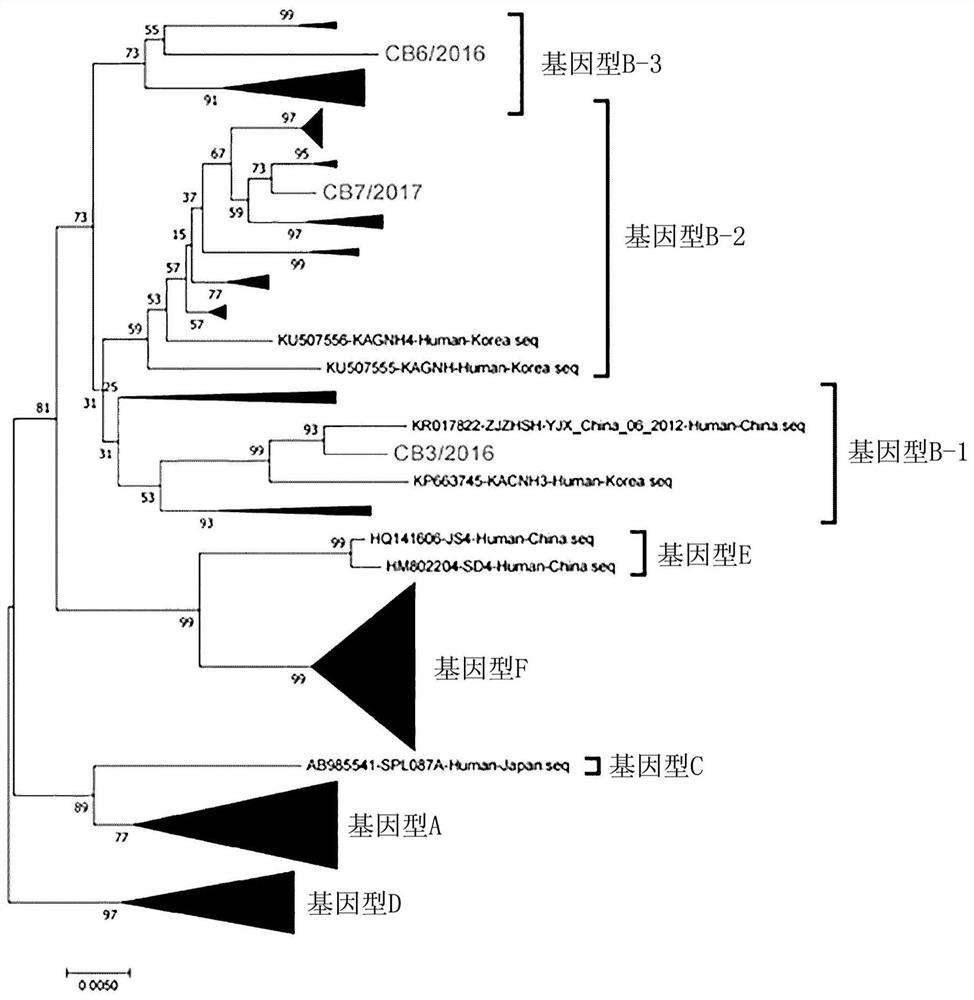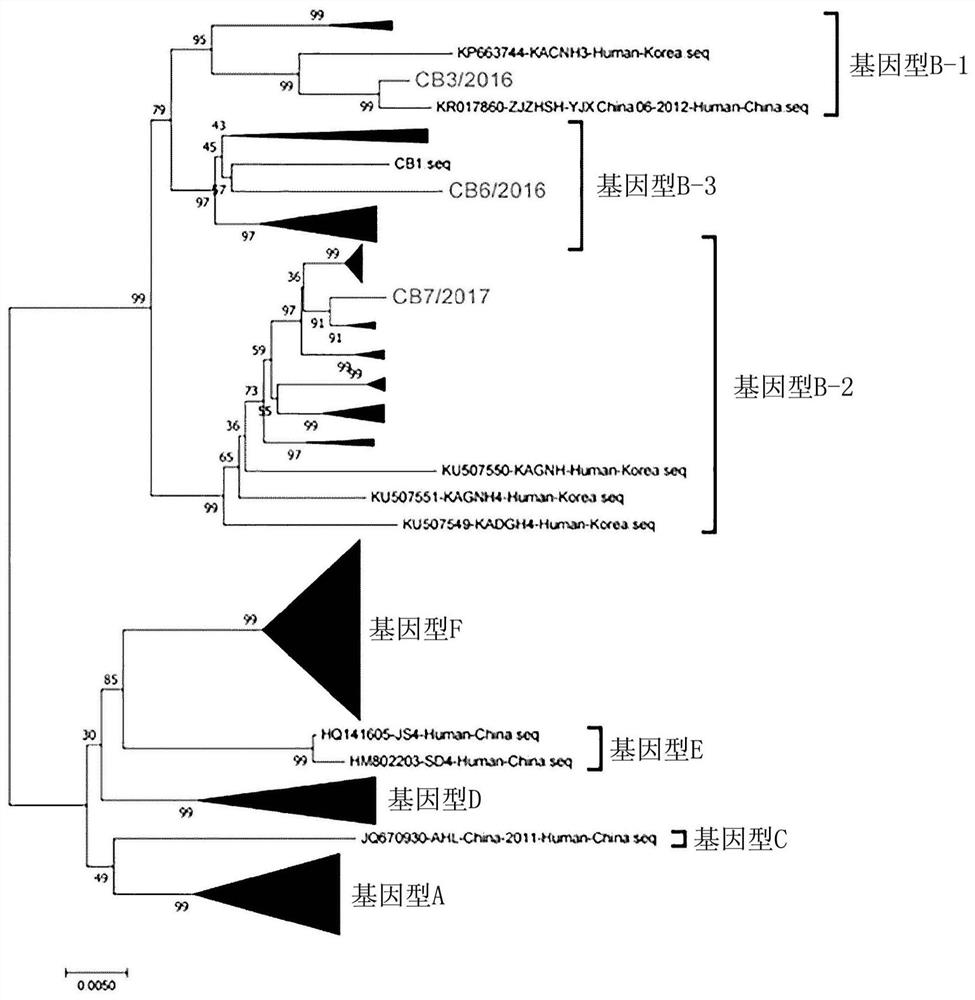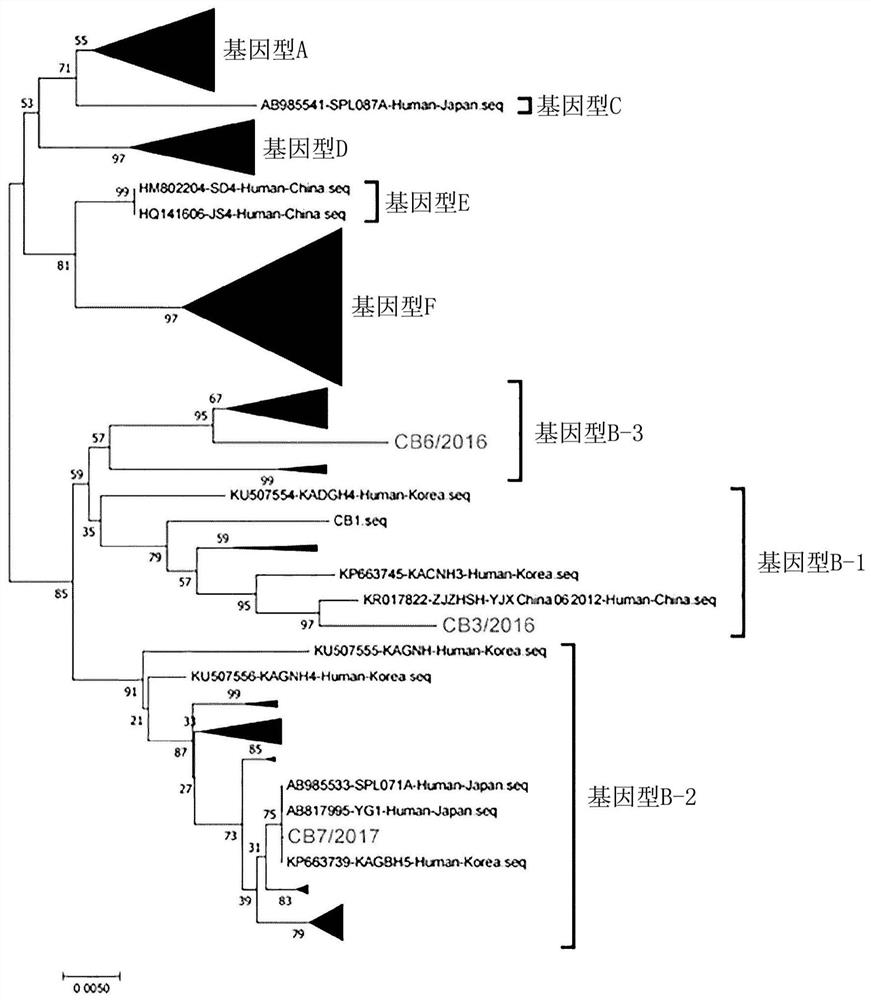Novel severe fever with thrombocytopenia syndrome virus
A syndrome and platelet technology, applied in the direction of viruses, antiviral agents, viral antigen components, etc., can solve problems such as undeveloped vaccines, and achieve excellent cross-immunogenicity effects
- Summary
- Abstract
- Description
- Claims
- Application Information
AI Technical Summary
Problems solved by technology
Method used
Image
Examples
Embodiment 1
[0071] Example 1. Isolation of virus
[0072]The blood of patients with suspected fever and thrombocytopenia syndrome, the blood of animals (goats and abandoned dogs) and wild tick homogenates among the patients in the University Affiliated Hospital were analyzed by real-time fluorescent quantitative PCR (real time PCR), PCR and ELISA Confirm positive / negative for fever with thrombocytopenia syndrome virus. Specifically, the day before the virus infection, the VeroE6 cells were divided into 12-well plates, and after culturing at a cell density greater than 60%, the cells were washed with PBS, and 300 μL of suspected infected patient's serum (centrifuged at 3000 rpm to separate the whole blood) 20 minutes to obtain serum) for 1 hour to infect. After infection, the serum was removed and washed with PBS, then replaced with 1% FBS-containing DMEM medium and cultured for 2 weeks. After 2 weeks, by RT-PCR (reverse transcription (reverse transcription) followed by real-time fluores...
Embodiment 2
[0073] Example 2. Analysis of genes of isolated viruses
[0074] The viruses CB3 / 2016, CB7 / 2017, and CB6 / 2016 isolated from Vero E6 cells were subjected to reverse transcription (Reverse-transcription), PCR, and next-generation sequencing (Next generation sequencing, NGS) to confirm the L, M, and The full-length sequence of the S(NP, NS) gene. Specifically, RNA was extracted from each virus and cDNA was prepared by reverse-transcription PCR. Thereafter, PCR was performed on the L, M, and S genes of each SFTS virus to obtain respective full-length genes. The NGS method was used for gene sequence analysis, and the L, M, and S genes of each virus were subjected to tagmentation and index PCR (index PCR) using the illumina nextera XT kit according to the protocol provided by Illumina. After that, the final sample was generated using the illimina miniseq sequencing system to generate a Fasta Q file, and the gene sequence of the file generated by the CLC main workbench program was ...
Embodiment 3
[0075] Embodiment 3. Confirm the L, M and S gene amino acid sequence difference of each virus
[0076] 3-1. Amino acid sequence differences of L genes
[0077] The amino acid sequence was analyzed based on the open reading frame (open reading frame, ORF) of the L, M and S genes of the viruses of the novel refined genotypes B-1, B-2 and B-3 isolated in the present invention. , L and M genes have differences. Specifically, the ORF (6255bp) of the L gene in the B genotype encodes RdRp. In the genotype B-1 virus of the present invention, the 1447th amino acid of RdRp is valine or the 1913th amino acid is lysine, and the genotype In B-2 virus and B-3 virus, the 1447th amino acid of RdRp is isoleucine or the 1913th amino acid is arginine ( Figure 5 Part A and Table 1).
[0078] Table 1
[0079]
[0080] 3-2. Amino acid sequence differences of M genes
[0081] Analysis of the amino acid sequences of the L, M, and S genes of the viruses of the new refined genotypes B-1, B...
PUM
| Property | Measurement | Unit |
|---|---|---|
| diameter | aaaaa | aaaaa |
Abstract
Description
Claims
Application Information
 Login to View More
Login to View More - R&D
- Intellectual Property
- Life Sciences
- Materials
- Tech Scout
- Unparalleled Data Quality
- Higher Quality Content
- 60% Fewer Hallucinations
Browse by: Latest US Patents, China's latest patents, Technical Efficacy Thesaurus, Application Domain, Technology Topic, Popular Technical Reports.
© 2025 PatSnap. All rights reserved.Legal|Privacy policy|Modern Slavery Act Transparency Statement|Sitemap|About US| Contact US: help@patsnap.com



